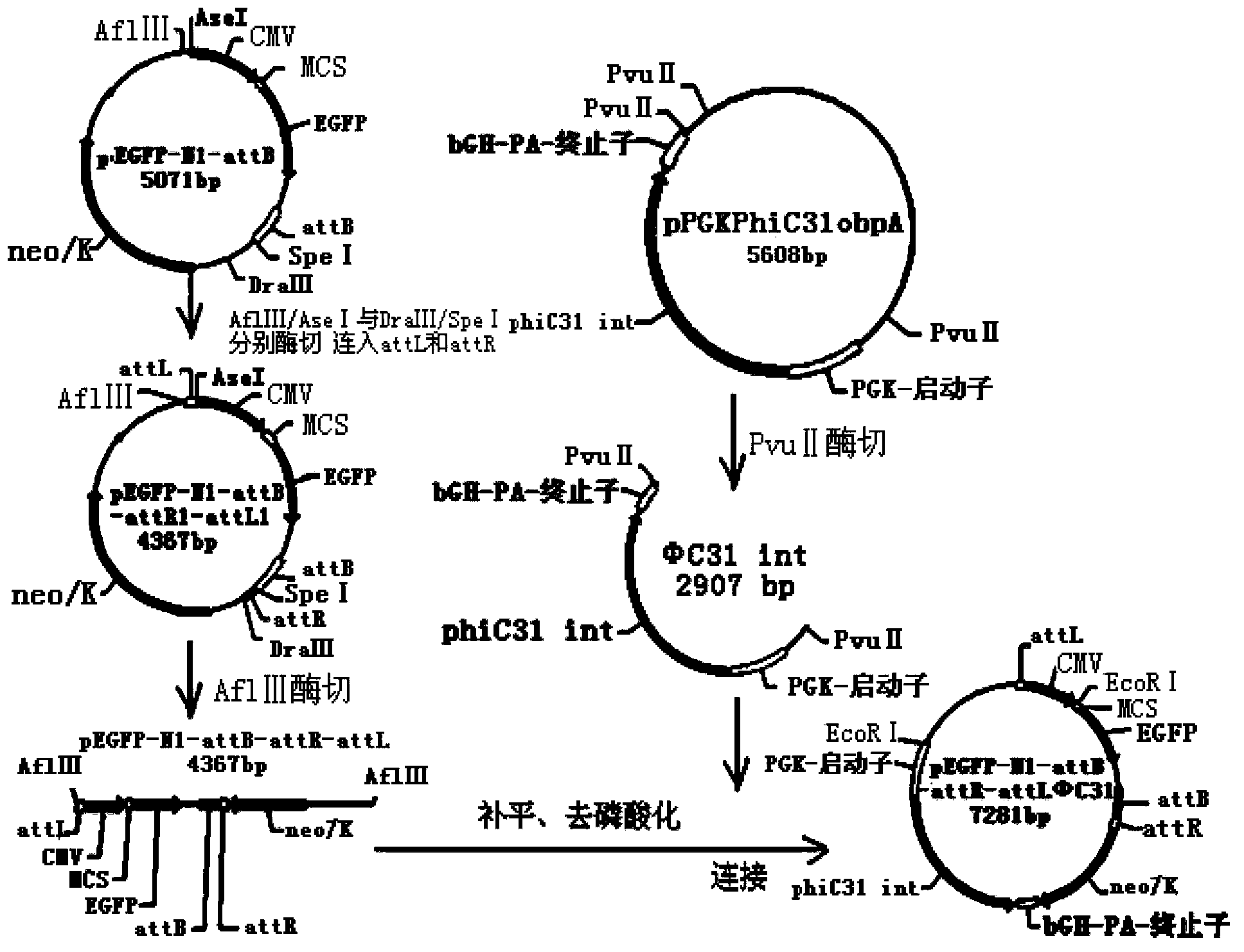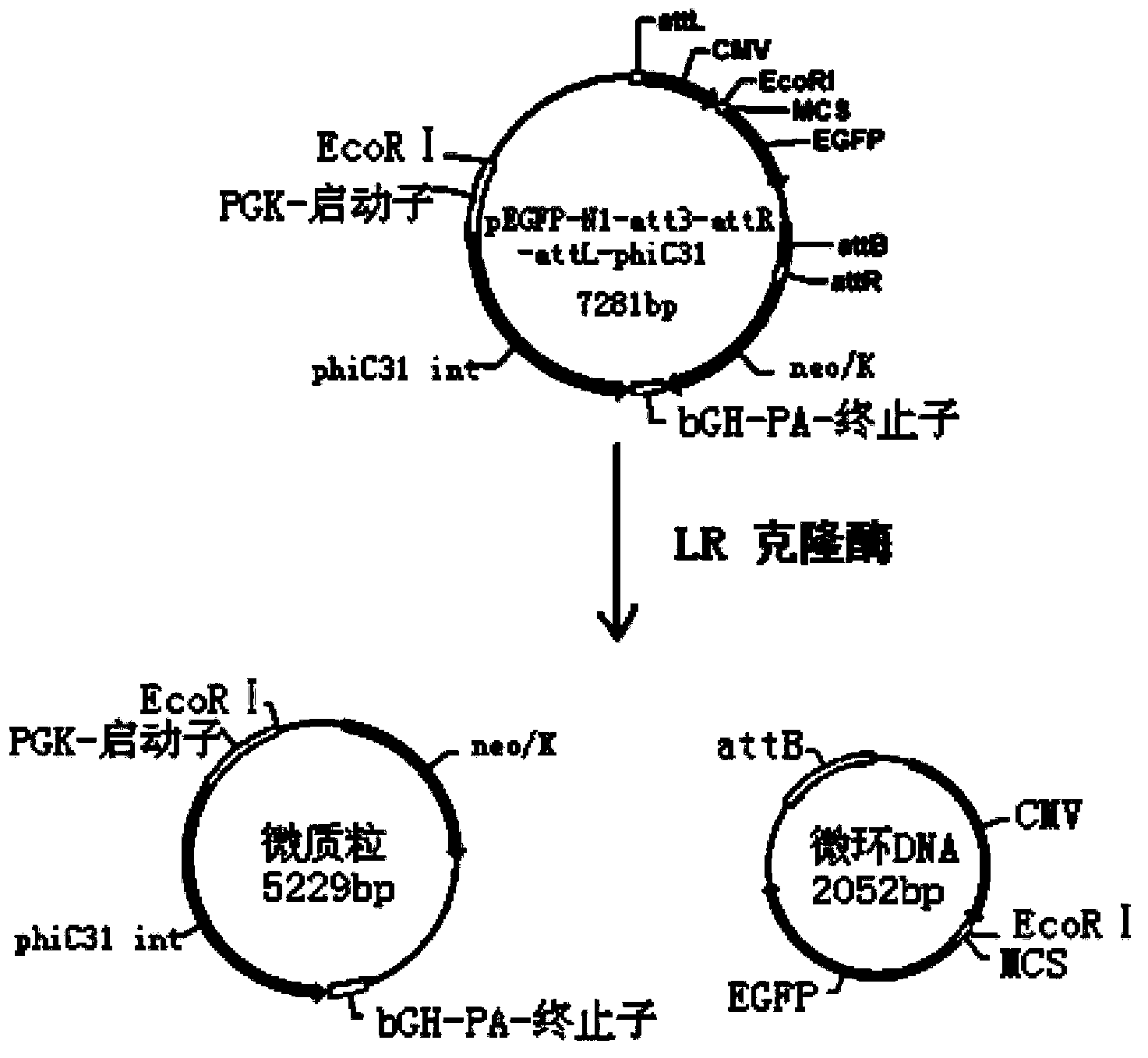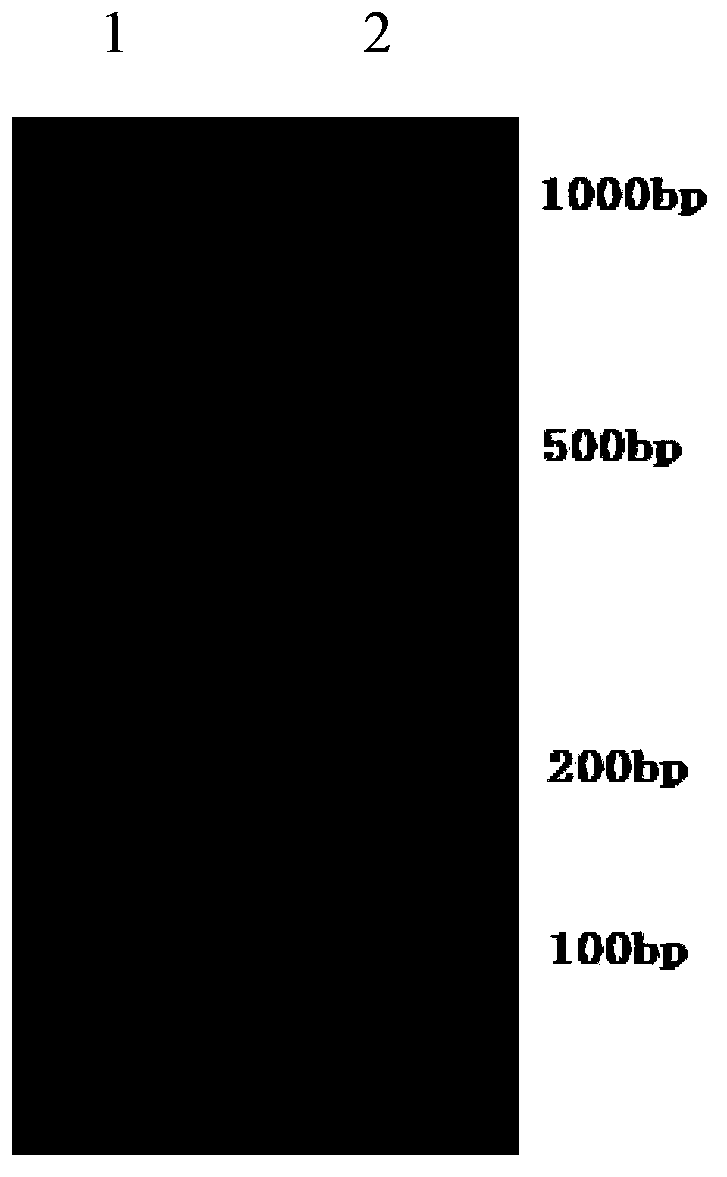Parental plasmid for obtaining minicircle DNA, and application thereof
A plasmid and parental technology, applied in the field of parental plasmids to obtain microcircle DNA, can solve the problems of low microcircle DNA acquisition, cumbersome microcircle DNA steps, etc.
- Summary
- Abstract
- Description
- Claims
- Application Information
AI Technical Summary
Problems solved by technology
Method used
Image
Examples
Embodiment 1
[0057] The construction of embodiment 1 parental plasmid vector
[0058] The construction strategy of pEGFP-N1-attB-attR-attL-ΦC31 plasmid described in the present invention is as follows figure 1 As shown, the attR sequence, the attL sequence and the ΦC31 integrase gene were sequentially connected to the pEGFP-N1-attB plasmid.
[0059] 1. Connect the attR fragment
[0060] Primer design: attR-up (containing a SpeI restriction enzyme site), its sequence is shown in SEQ ID NO: 1 in the sequence listing;
[0061] attR-down (containing a DraIII restriction site), its sequence is shown in SEQ ID NO: 2 in the sequence listing.
[0062] The attR double-stranded fragment was obtained by PCR amplification.
[0063] attR and attRrc single chains were synthesized by Invitrogen.
[0064] attR sequence, the sequence of which is shown in SEQ ID NO:3 in the sequence listing (125bp);
[0065] The attRrc sequence is shown in SEQ ID NO: 4 in the sequence listing (125bp).
[0066] PCR rea...
Embodiment 2
[0092] Embodiment 2LR recombination reaction
[0093] The reaction system (10 μl) consists of the following components: DNA (2k8 plasmid prepared in Example 1) 200ng, 10×TE buffer 1μl, LR clonase (LR clonase) 2μl, add ddH 2 0 to 10 μl. You can also use 1×TE buffer to dissolve the plasmid (2k8) during plasmid extraction. At this time, the reaction system (10μl) is: DNA (2k8 plasmid) 200ng, LR clonase (LR clonase) 2μl, add 1×TE buffer to 10 μl.
[0094] Reaction conditions: Incubate at 25°C for 3h to 14h in a PCR instrument. The LR cloning reaction process of the plasmid is as follows: figure 2 shown.
[0095] The LR reaction system was digested with EcoRI restriction enzyme. If the pEGFP-N1-attB-attR-attL-ΦC31 plasmid undergoes LR recombination reaction, two bands of 2.1Kb (minicircle DNA) and 5.2Kb (microplasmid) can be cut out, and if it is the original parental plasmid, it can be cut out Two bands of 1.2Kb and 6.1Kb. The enzyme digestion system is: EcoRI enzyme 1μl, 1...
Embodiment 3
[0097] Example 3 Transfection of HeLa cells
[0098] use GenJet TM Plus DNA In Vitro Tranfection Reagent (SignaGen Laboratories, Cat. No. SL100499) was used to transfect the LR reaction system obtained in Example 2 into HeLa cells in a 12-well plate.
[0099] Transfection steps:
[0100] (1) Use 750 μl of serum-free DMEM (GIBCO, Cat. No. 11995-073) to change the medium for Hela cells.
[0101] (2) Prepare two 1.5ml EP tubes, marked as tube A and tube B respectively. If it is the experimental group, add 38 μl of serum-free DMEM, 10 μl of LR recombination reaction system, and 3 μl of pPGKPhiC31obpA plasmid (200ng / μl) into tube A, and mix by pipetting 3-4 times. If it is a control group, add 38 μl of serum-free DMEM, 1.39 μl of pEGFP-N1-attB plasmid (100 ng / μl), and 3.72 μl of pPGKPhiC31obpA plasmid (200 ng / μl) in tube A, and mix by pipetting 3 to 4 times. Tube B of the experimental group was the same as that of the control group. 38 μl of serum-free DMEM and 4 μl of transfec...
PUM
 Login to View More
Login to View More Abstract
Description
Claims
Application Information
 Login to View More
Login to View More - R&D
- Intellectual Property
- Life Sciences
- Materials
- Tech Scout
- Unparalleled Data Quality
- Higher Quality Content
- 60% Fewer Hallucinations
Browse by: Latest US Patents, China's latest patents, Technical Efficacy Thesaurus, Application Domain, Technology Topic, Popular Technical Reports.
© 2025 PatSnap. All rights reserved.Legal|Privacy policy|Modern Slavery Act Transparency Statement|Sitemap|About US| Contact US: help@patsnap.com



